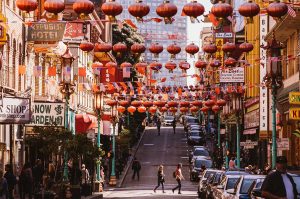Introduction
The Chinese New Year, also known as the Spring Festival, is a time of celebration, family reunions, and traditional festivities in China. However, beyond the borders of the Middle Kingdom, this annual event has far-reaching implications, especially in the dynamic world of global trade and logistics. In this blog post, we will delve into the profound impacts of the Chinese New Year on the US freight and shipping market.

Understanding the Chinese New Year
The Chinese New Year is a lunar festival that marks the end of winter and ushers in the beginning of spring. It is based on the Chinese zodiac, with each year represented by one of the twelve animal signs. Celebrations typically last for 15 days, culminating in the Lantern Festival.
During this period, Chinese businesses shut down, and millions of workers return to their hometowns to celebrate with family. This mass migration, known as Chunyun, is considered the largest annual human migration in the world. The extensive shutdown of manufacturing and business operations during the Chinese New Year has a profound impact on global supply chains, affecting industries worldwide, including the US freight and shipping market.
Manufacturing Slowdown and Production Halt
One of the immediate effects of the Chinese New Year on the US freight and shipping market is the manufacturing slowdown and, in some cases, a temporary production halt. Many factories in China close weeks in advance of the festival as workers leave for their hometowns. This disrupts the production of goods, components, and raw materials that are part of the global supply chain.
For US importers, the reduced production capacity in China means delayed shipments and potential shortages of critical goods. Industries heavily reliant on Chinese manufacturing, such as electronics, textiles, and automotive, experience a noticeable impact on their supply chains. This slowdown has a cascading effect on the transportation and logistics sectors, leading to congestion and disruptions at ports and distribution centers.
Container Shortages and Congestion
The Chinese New Year triggers a surge in shipping activity as businesses rush to fulfill orders before the manufacturing shutdown. This rush often leads to a spike in demand for shipping containers, causing shortages and increased freight rates. As a result, US companies may face challenges securing containers for their exports or imports during this period.
Moreover, the rush to ship goods before the Chinese New Year creates congestion at Chinese ports. This congestion can lead to delays in vessel schedules and increased waiting times for ships, affecting the overall efficiency of the supply chain. The impact is felt across the US freight industry, particularly for companies relying on just-in-time inventory systems.
Price Fluctuations and Increased Costs
The law of supply and demand comes into play during the Chinese New Year, influencing freight rates and transportation costs. The surge in demand for shipping services, coupled with container shortages and port congestion, often results in increased freight rates. US businesses may experience higher transportation costs during this period, affecting their bottom line.
The increased costs are not limited to shipping rates. Supply chain disruptions can also lead to higher prices for goods due to shortages and delays. For US consumers, this may translate into increased prices for imported products ranging from electronics to apparel.
 Managing Inventory and Planning Ahead
Managing Inventory and Planning Ahead
To mitigate the impacts of the Chinese New Year on the US freight and shipping market, businesses must adopt proactive strategies. Effective inventory management becomes crucial during this period. Companies need to plan ahead, ensuring that they have sufficient stock to cover the production hiatus in China and the subsequent delays in shipping.
Diversification of Suppliers
Overreliance on a single supplier, especially one located in a region deeply affected by the Chinese New Year, can expose businesses to significant risks. To enhance resilience, companies should consider diversifying their supplier base. This strategy can help mitigate the impact of disruptions caused by the festival and reduce vulnerability to unforeseen events.
Developing Contingency Plans
Developing robust contingency plans is essential for navigating the challenges posed by the Chinese New Year. Businesses should establish clear communication channels with their suppliers, freight forwarders, and logistics partners to stay informed about potential delays. Having contingency plans in place allows companies to react swiftly to disruptions and minimize the impact on their operations.
Advanced Planning and Scheduling
Given the cyclical nature of the Chinese New Year, businesses can leverage historical data and insights to plan for future disruptions. By understanding the typical patterns and timelines associated with the festival, companies can develop advanced planning and scheduling strategies. This foresight enables them to allocate resources efficiently and optimize their supply chain operations.
Technological Solutions for Visibility
Embracing technological solutions for supply chain visibility is crucial for effective management during the Chinese New Year. Real-time tracking systems and data analytics tools provide businesses with insights into the movement of goods, allowing them to identify potential bottlenecks and proactively address issues. Enhanced visibility enables more informed decision-making and reduces the impact of uncertainties on the supply chain.
Conclusion
The Chinese New Year’s impact on the US freight and shipping market is a testament to the interconnectedness of the global economy. As businesses continue to navigate the complexities of international trade, understanding and preparing for the disruptions caused by this annual festival become paramount. By adopting proactive strategies, diversifying suppliers, and leveraging technological solutions, US companies can not only weather the challenges posed by the Chinese New Year but also build more resilient and adaptable supply chains for the future.


